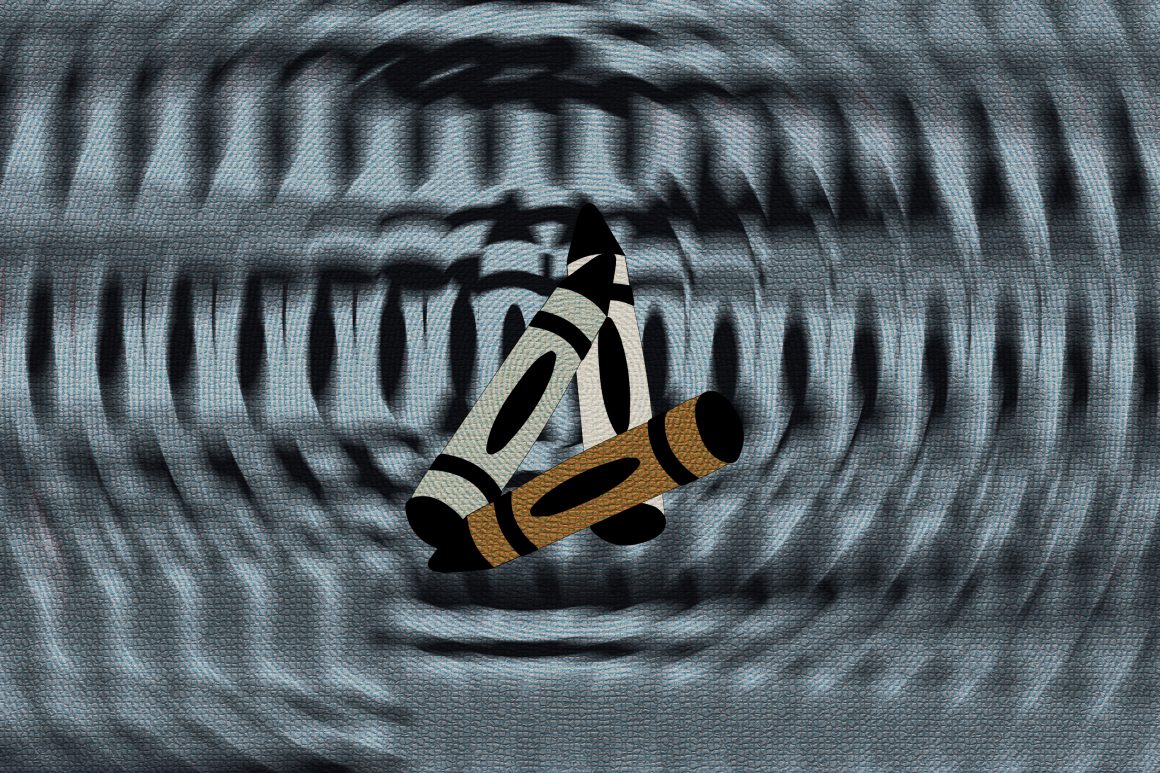
Pencil crayons and decolonization: Preventing the perpetuation of white supremacy
By Amina Al Haidery, September 6 2023—
In our post-colonialistic, contemporary society, we are often exhorted to break beyond theory and enter practice. What does this mean, though? How can we do more than just write papers and preach about inclusivity? As students, what are our options?
Last year, I had the opportunity to teach a children’s creative writing workshop, partnering with the Calgary Public Library to host weekly activities at each location. I had an incredibly diverse room for every session, with some children not even being able to speak English. When this was the case, I tried to prioritize the creativity aspect over the writing aspect.
This led to a self-portrait activity that initially felt like a slap in the face when I was planning for it the night before. I realized that in order to actually make self-portraits that were accurate, I’d need to provide pencil crayons that had a range of skin tones outside of the standard beige or brown.
Here I was, third year into my degree, the propensity to speak on diversity and inclusion in papers so strong yet momentously about to hand these children a box of pencil crayons that would make them feel, at the very least, unimportant.
Yes, they were probably too young to conceptualize how the lack of their skin colour in a box of pencil crayons would perpetuate white supremacy, but it doesn’t need to emanate a racist-slur-level problem to have an impact. The ways in which white supremacist thinking has exploited a vicious, sustainable cycle through the disregard of race and racism as a whole have been timeless. When inclusivity in a pack of pencil crayons is minimized or mocked, what other feeling might the children grow up to have other than indifference towards their difference?
I was taken aback by the situation at hand; it seemed so simple yet I felt obligated to consider every possible outcome. Do I bring in a larger range of pencil crayons and not say anything? Should I make it into a big deal? Should I use this as an introduction to teach about race?
I decided to plan around the former. I brought in a few packs of skin-toned pencil crayons and let the children match a colour to their hands to choose an accurate skin tone. It was nothing groundbreaking, of course, but it was a way I was able to step outside of theory and provide something tangible to the children.
Skin colour, whether we want to admit it or not, determines who we listen to. There can be a clear connection made between the lack of darker skin tone shades and the lack of authority given to BIPOC people (or, when it is given, are they listened to?). Think about it. How many non-white professors have you had? How many Black authors were you assigned in high school? How many times did you, as a child, want to look like a Disney channel star? Everything around us has perpetuated Eurocentric superiority and we have had no choice but to internalize and acquiesce to it.
If we can interject this early on by showing all skin tones are worthy of being heard by their mere presence in a pack of pencil crayons, we can raise a generation aware of their differences but willing to accept they don’t have to hinder them. It is not a privilege; it is a right to be included. They will know they do not have to surrender to white supremacist ideologies.
This article is a part of our Voices section and does not necessarily reflect the views of the Gauntlet editorial board.
